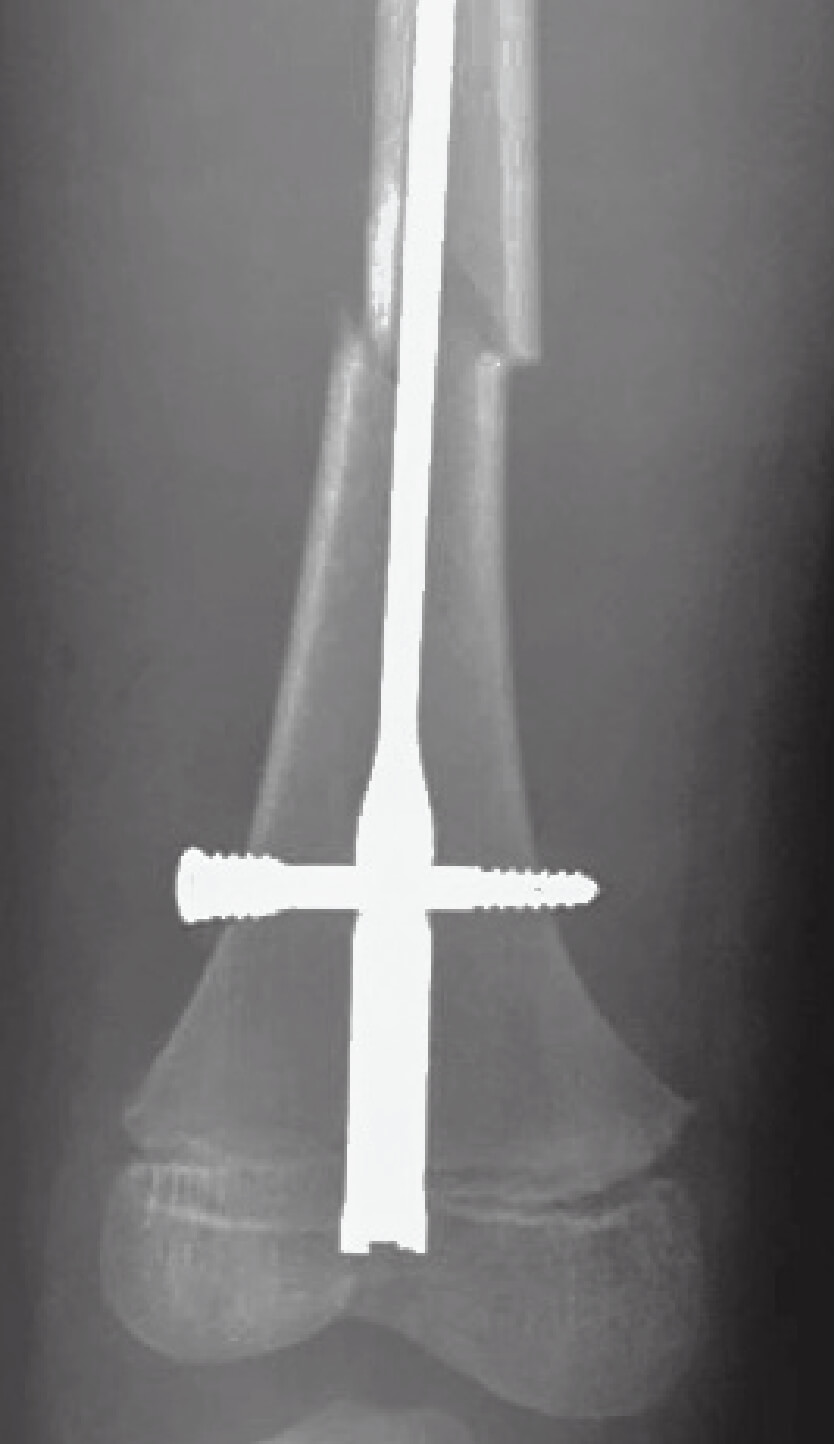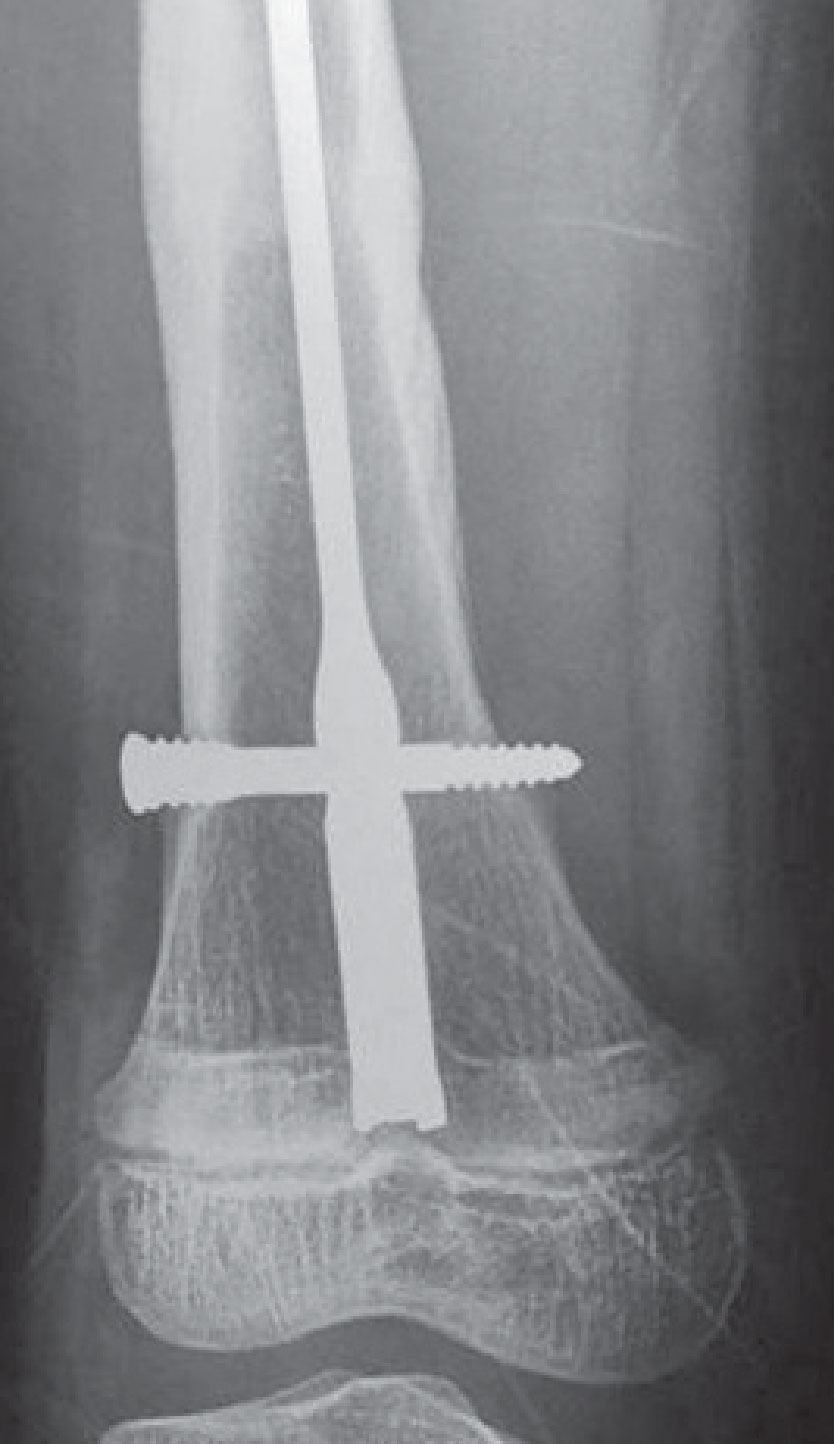Healing Fractures in Growing Bones
May 12, 2019
Pilot study examines a way to repair difficult fractures in resource-poor countries
Innovations in Orthopaedics | Summer 2019
In the United States, pediatric surgeons have all the implants, diagnostic tools and other equipment they need to optimally repair femoral shaft fractures in children. Developing countries, however, don’t have such luxury. They make do with little to no power equipment, a lack of X-ray equipment in the operating room, and poor sterilization, resulting in few surgical options.
 Raymond Liu, MD
Raymond Liu, MDIn resource-poor countries, antegrade nails through the greater trochanter are a viable solution thanks to educational outreach and free implants provided by SIGN Fracture Care International, a humanitarian organization that provides orthopaedic treatment to trauma victims in developing countries. These nails are designed to be placed with minimal power equipment and without fluoroscopy (intraoperative X-rays).
Unfortunately, the nails are not an ideal option for distal femoral shaft fractures in children where lack of fluoroscopy and limited nail sizes make it difficult to capture an adequate part of the distal fragment.
To get by, doctors have employed methods that have rarely been used in the United States for several decades: traction and body casts in older children. These options lead to prolonged pain and suboptimal fracture position. Much of the time, treatment involves a long hospital stay and disrupts the entire family.
Raymond Liu, MD, a pediatric orthopaedic surgeon at University Hospitals Rainbow Babies & Children’s Hospital, and Associate Professor of Orthopaedics, Case Western Reserve University School of Medicine — along with a team of researchers from University Hospitals Cleveland Medical Center and CWRU School of Medicine — is investigating retrograde femoral nailing as an approach to treating these challenging fractures in children. The procedure already works well in adults in resource-poor countries. However, doctors have hesitated to use this method in children because of possible damage to the growth plate.
Retrograde femoral nailing involves drilling through the distal femoral physis, the most active lower-extremity growth plate. If that growth plate closes, the child could end up with a severely short or crooked limb. Is it possible, Dr. Liu wondered, to place a large intramedullary nail into this area without damaging the growth plate?
Dr. Liu’s pilot study, published in Journal of Pediatric Orthopaedics, shows it should work under certain conditions. “Our study has demonstrated that the growth plate functions appropriately with a metal rod across it,” Dr. Liu says. “It has also given us parameters to guide the surgeons in these countries in terms of nail sizing and insertion technique.”
 Figure 1A: This 11-year-old boy was treated in Mongolia with a retrograde femoral nailing for his distal femoral shaft fracture.
Figure 1A: This 11-year-old boy was treated in Mongolia with a retrograde femoral nailing for his distal femoral shaft fracture. Figure 1B: Nine months later, radiographs demonstrate appropriate growth of the distal femoral with change in position of the nail versus the growth plate and a bony line called a Harris growth arrest line, which supports that the bone is growing reasonably.
Figure 1B: Nine months later, radiographs demonstrate appropriate growth of the distal femoral with change in position of the nail versus the growth plate and a bony line called a Harris growth arrest line, which supports that the bone is growing reasonably.Dr. Liu says more research is required before advocating the technique to pediatric surgeons in resource-poor countries. Unlike in the first animal study, a nail placed into a child will change its position relative to the growth plate as the child grows, with the growth plate passing away from the tip of the nail.
However, data from a second sheep study, recently presented at the European Paediatric Orthopaedic Society and Pediatric Orthopaedic Society of North America (POSNA) annual meetings, suggest that growth can slow down after retrograde femoral nailing. Specifically, growth issues are suspect after the growth plate has growth beyond the end of the nail, with microscopic analysis demonstrating small bony bars forming across the growth plate.
Due to the lack of alternatives, physicians in Mongolia have performed the surgery in children during the past few years. Dr. Liu says these children didn’t seem to have growth issues, but because follow-up was limited and the radiographic protocols were not complete, safety is still unknown.
THE RESEARCH BEHIND THE RESEARCH
This exciting series of studies began after Dr. Liu had first studied the anatomy of the distal femoral physis. Around 2011, he received a call from Lewis Zirkle, MD, president and founder of SIGN Fracture Care International, who had read a UH publication highlighting Dr. Liu’s research. Dr. Zirkle wanted to know if pediatric retrograde femoral nailing could be safe, and Dr. Liu replied that there were not enough data yet.As part of its mission, SIGN developed an intramedullary nail system for use in facilities that generally do not have real-time X-ray or power equipment. They have supplied the implants to facilities in more than 50 countries. They have also trained surgeons in these countries on how to use the SIGN implants. Despite their overall success, however, they were frustrated by the issue of pediatric distal femoral shaft fractures.
“We wanted to extend their capabilities to include distal femoral fractures,” Dr. Liu says. “Despite their impressive mission and vision, they didn’t have a good way to treat these kids.”
To further determine the safety and efficacy of retrograde femoral nailing for distal femoral fractures in children, Dr. Liu successfully applied for a research grant from POSNA. “We’ll look at what happens if you remove the nail early before the growth plate passes the end of the nail,” Dr. Liu says. If early removal of the nail can be done without altering growth function, retrograde femoral nailing could be a viable option in resource-poor countries.
To refer a pediatric patient to Dr. Liu, call 216-844-7613.


